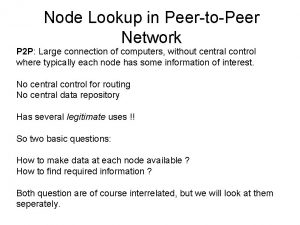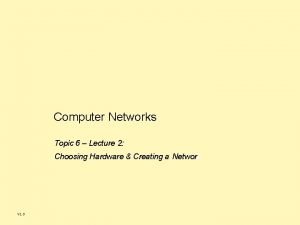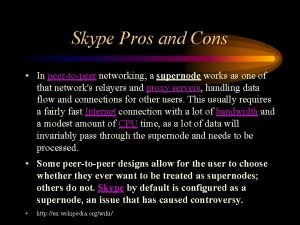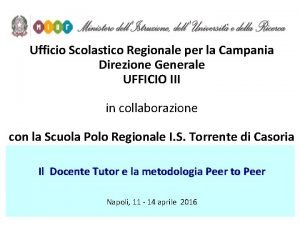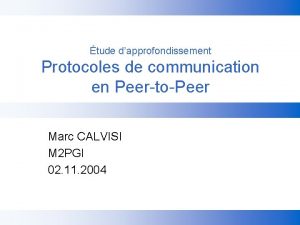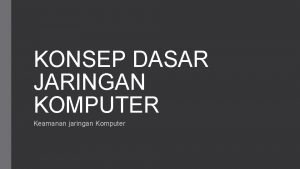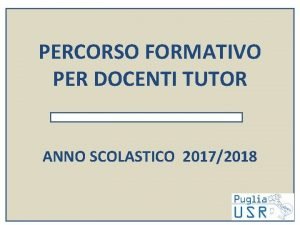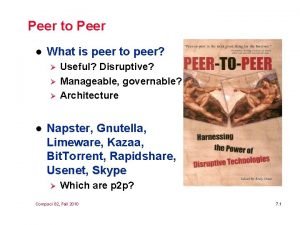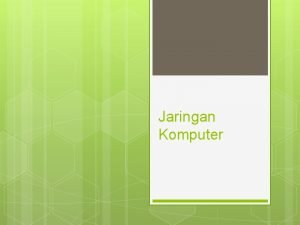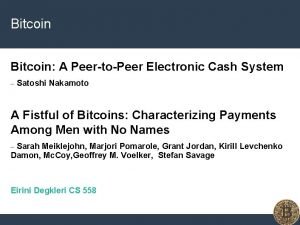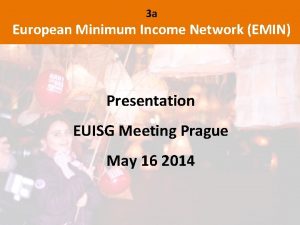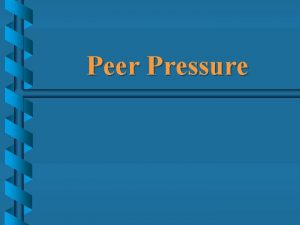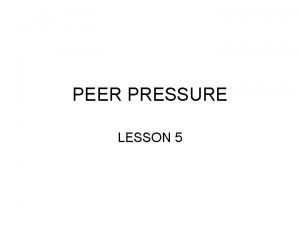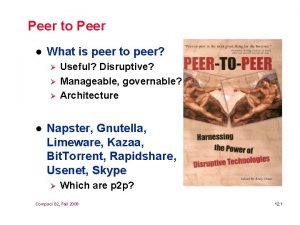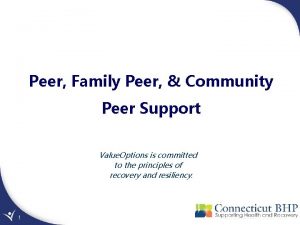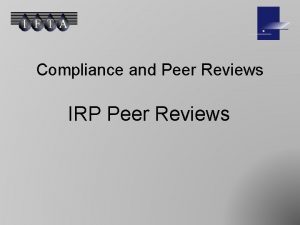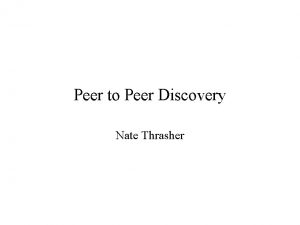European Minimum Income Network EMIN EMIN Peer review














- Slides: 14

European Minimum Income Network (EMIN) EMIN Peer review Coverage and take-up of minimum income benefits Helsinki – 13 March 2018 EAPN Portugal

State of play on eligibility and conditionality § The minimum income scheme in Portugal was established in 1996 as:

State of play on eligibility and conditionality § The RSI is aimed at individuals and families living in severe economic distress and in a potential or actual state of social exclusion § RSI’s goal is to ensure that these people will have sufficient resources to cover their basic needs, while promoting their gradual social and professional integration

State of play on eligibility and conditionality The SII is composed by a monetary benefit and an integration contract. To have access to SII, it is necessary to make a formal and express commitment to enter into the integration contract, in particular through availability for work, training or other forms of insertion that may prove appropriate.

State of play on eligibility and conditionality RSI - a means-tested scheme § Claimants must present all the documentation attesting to their economic situation § All household income, regardless of its nature and origin, is taken into account for the purposes of the means test § For calculation purposes, this income includes the claimant’s household income from work, other benefits and assets (e. g. bank deposits, income from movable assets or goods subject to registration) § Both real property as such and income derived from it are taken into account. The value of real property owned by the claimant and his/her household cannot exceed 60 times the Social Support Index (IAS).

State of play on eligibility and conditionality § To have access to the SII the monthly income cannot exceed 186, 68€ for one person living alone. § The sum of the monthly income of every members of the household cannot exceed the maximum amount of SII, calculated considering the household composition. § The maximum amount of SII corresponds to the sum of the following values, for each member of the household: Holder 186, 68€ (100% of SII amount) For each adult 130, 68€ (70% of SII amount) For each minor 93, 34€ (50% of SII amount)

State of play on eligibility and conditionality To obtain the benefit: • • The claimant and the household members must accept the obligations stemming from the Social Integration Contract negotiated with the case manager within 60 days of submitting the claim The requirements focus mainly on job search, education, vocational training and integration in the labour market; • In case of unemployment and as long as the person is able to work SIIbeneficiaries have to be enrolled in a Local Employment Centre. The case manager then determines individual job search requirements and whether participation in job counseling/public employment programmes/training programmes is mandatory. • All children and young people at statutory school age must attend school •

State of play on eligibility and conditionality accepting proposed jobs incentives to take up a self-employed activity prevention, treatment or rehabilitation vocational training occupational programmes professional counselling or training Groups exempt from participating in the integration contract and from registering with the job centre (as active availability for professional integration is concerned) § people with long-term or permanent incapacity for work § minors aged 16 and under or persons aged 65 or over § carers of a family member § people who do not fulfil the conditions for working, as certified by the competent employment services.

State-of-play of non-take-up § There is no current data on numbers of people not taking up. § Many people also choose not to require the measure, even if entitled, by the stigma and prejudice in society about the beneficiaries of SII, or by the invasion of privacy that it entails. § The heavy complex procedures are also inhibitors factors in the access to the measure. § Other type of requirements associated to accessing and benefiting from the measure, namely the availability to participate in training courses suggested by the technicians of SII are factors contributing to non-take-up. The little emancipation encouragement in the nature of some of the training courses, as well as the low perspectives of employability associated with these measures and, also, the negative weight this compulsion has on some beneficiaries.

State-of-play of non-take-up § Other factors of non take are the difficulty for the homeless population to require SII because they don´t not have a fixed address. § On the other hand, the requirement for a declaration of registration in the Employment Centre is the reason why some households are unable to have access to SII. The registration in the Employment Centre is overridden for any unjustified absence in information or motivational session run by this entity, making it impossible for the applicant to register again in that same Employment Centre for a few months.

Suggestions to improve take-up 1) Develop a work in order to build consensus to break prejudices and stereotypes about the beneficiaries and on the function of the measure. 2) Develop awareness raising and information campaigns addressing civil society and employers. 3) The access to and management of the measure must be nonbureaucratic, promoting faster procedures for access and renovation of the Social Insertion Income. 4) The same proportionality in terms of human and financial resources assigned to the monitoring of this measure as to other public policy measures. 5) The regular publication of statistical data on the numbers of beneficiaries or the amount of the provision.

Suggestions to improve take-up 6) The dissemination of periodic statistical information must be accompanied by processes of monitoring and evaluation with a qualitative dimension to allow knowledge about the impact of the measure on the lives of the beneficiaries and the general society. 7) Studies should be carried out to raise awareness of the social costs of services carried out in the SII cuts, as well as the balance between costs and benefits (social, economic and 34 financial) under alternative scenarios of increase on the amounts of the benefit. 8) Reactivate the former Social Insertion Income National Commission which may meet the conditions for a proper assessment of the measure.

Suggestions to improve take-up 9) It is important to have a better understanding of the living conditions of the beneficiaries of these measure, their inclusion pathways, the provision and functioning of the social and economic impact of policy changes suffered by the Social Insertion Income. 10) The protocols with ONGs in the creation of multidisciplinary teams to carry out the follow up of the households benefiting from the measure is a good practice. However, the proximity and the technical monitoring cannot be confused with surveillance and controlling processes where the beneficiaries are forced to give up their right to privacy. 11) The right to privacy by the beneficiaries of the measure cannot be different from the right to privacy of other citizens.

Suggestions to improve take-up 12) The supervisory actions must be done by human resources employed specifically for that purpose. The relationship between the social professional and the beneficiary of this type of measure should be based on mutual trust, and the process of inclusion of the beneficiaries must be based on negotiation and empowerment.
 Features of peer to peer network and client server network
Features of peer to peer network and client server network Node lookup in peer to peer network
Node lookup in peer to peer network Peer to peer network hardware
Peer to peer network hardware Pros and cons of using skype
Pros and cons of using skype Annotazioni sulla verifica effettuata peer to peer
Annotazioni sulla verifica effettuata peer to peer Peer-to-peer
Peer-to-peer Peer to peer transactional replication
Peer to peer transactional replication Peer to peer transactional replication
Peer to peer transactional replication Gambar topologi peer to peer
Gambar topologi peer to peer Esempio registro peer to peer compilato
Esempio registro peer to peer compilato Scheda osservazione tutor compilata
Scheda osservazione tutor compilata Relazione finale tutor tirocinio esempio
Relazione finale tutor tirocinio esempio Peer to peer l
Peer to peer l Peer to peer merupakan jenis jaringan… *
Peer to peer merupakan jenis jaringan… * Bitcoin: a peer-to-peer electronic cash system
Bitcoin: a peer-to-peer electronic cash system

